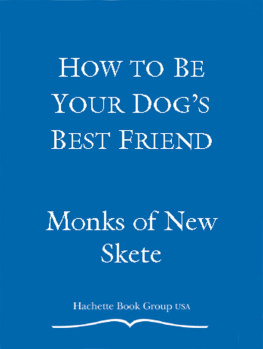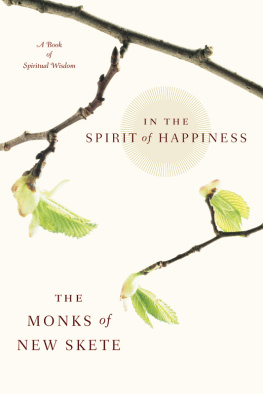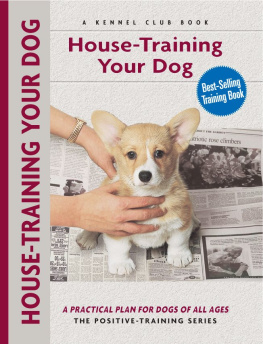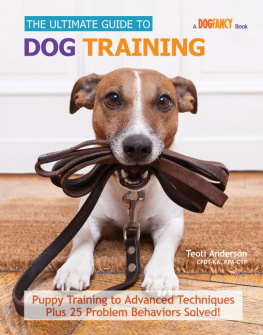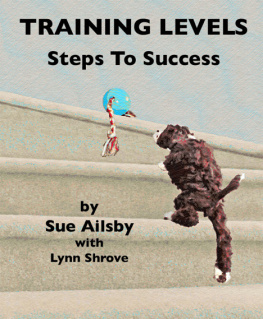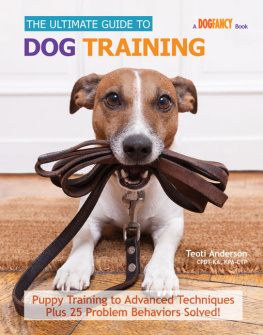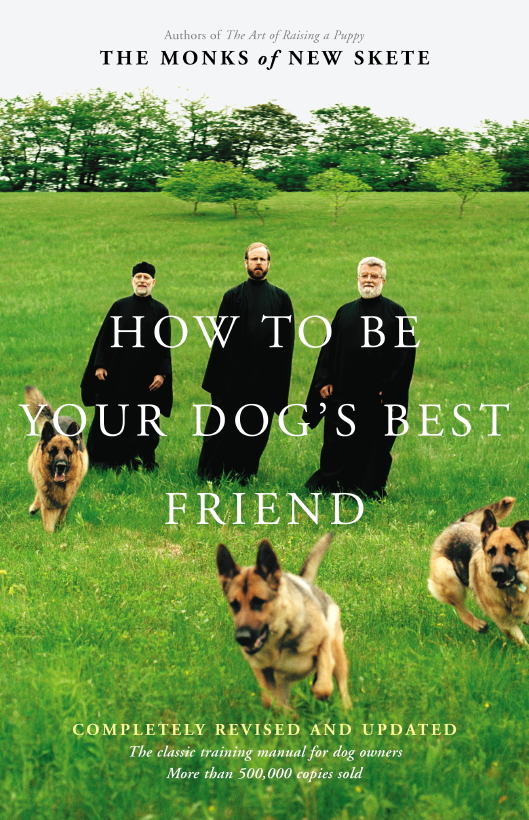How to Be Your Dog's Best Friend
The Monks of New Skete
How to Be Your Dog's Best Friend
THE CLASSIC TRAINING MANUAL FOR DOG OWNERS
Completely Revised and Updated

LITTLE, BROWN AND COMPANY
Boston New York London
Copyright 2002 The Monks of New Skete
All rights reserved. No part of this book may be reproduced
in any form or by any electronic or mechanical means,
including information storage and retrieval systems,
without permission in writing from the publisher,
except by a reviewer who may quote
brief passages in a review.
Hachette Book Group, 237 Park Avenue, New York, NY 10017
Visit our Web site at www.HachetteBookGroup.com.
Second Edition
ISBN: 978-0-7595-2438-5
To our many clients over
the years, whose love for
their dogs has been a constant
source of inspiration for us
Also by the Monks of New Skete
DOG CARE AND TRAINING
The Art of Raising a Puppy
SPIRITUALITY
In the Spirit of Happiness
Learning the value of silence is learning to listen to, instead of screaming at, reality: opening your mind enough to find what the end of someone else's sentence sounds like, or listening to a dog until you discover what is needed instead of imposing yourself in the name of training.
THOMAS DOBUSH, Monk of New Skete (October 9, 1941November 7, 1973), in Gleanings, the Journal of New Skete, Winter 1973
I love inseeing. Can you imagine with me how glorious it is to insee, for example, a dog as one passes by. Insee (I don't mean in-spect, which is only a kind of human gymnastic, by means of which one immediately comes out again on the other side of the dog, regarding it merely, so to speak, as a window upon the humanity lying behind it, not that,) but to let oneself precisely into the dog's very center, the point from which it becomes a dog, the place in it where God, as it were, would have sat down for a moment when the dog was finished, in order to watch it under the influence of its first embarrassments and inspirations and to know that it was good, that nothing was lacking, that it could not have been better made... Laugh though you may, dear confidant, if I am to tell you where my all-greatest feeling, my world-feeling, my earthly bliss was to be found, I must confess to you: it was to be found time and again, here and there, in such timeless moments of this divine inseeing.
RAINER MARIA RILKE, New Poems, Translated by J. B. Leishman
But now ask the beasts and let them teach you,
And the birds of the air and let them tell you,
Or speak to the earth and let it inform you,
And let the fish of the sea recount to you.
Which among these does not know that the hand of God has done this,
In whose palm is the life of every living thing,
And the breath of every human being?
Job 12:710
Preface to the Second Edition of How to Be Your Dog's Best Friend
Twenty-four years is a long time for any instructional book to go unrevised, but particularly when it applies to a field as dynamic and lively as dog training. Perhaps our biggest reason for delaying such a project until now involved priorities: determining what would be of most help to dog owners and their dogs in the nitty-gritty of their relationships. Experience convinced us that a separate book on puppyhood and a comprehensive set of training videos were of more immediate need, so we applied our energies to those projects.
Still, for a long time now we have wanted to come out with a revised edition of How to Be Your Dog's Best Friend that included the most current ideas about training and dog care. Doing so means being faithful to what we have learned through our experience. In the years following the original edition's publication in 1978, New Skete has been privileged to continue its work with dogs and to share in the growing understanding of all things canine. Many of the insights and intuitions that we first articulated have had the chance to age and become more refined. We have also continued to learn much that is new, benefiting from the work of many talented trainers and animal behaviorists, as well as from the generosity and openness of dog owners and friends who have brought their dogs to the monastery. More significant, our own sense of the mystery that a relationship with a dog brings us into has deepened, too. The result for us has been a more mature and comprehensive understanding and love of training and the human-canine relationship.
We hope that this revised edition will inspire and enable you, our readers, to create a more satisfying relationship with your dog, while at the same time discovering the deeper significance and spiritual value of life with your best friend.
Acknowledgments
All trainers, whether or not they attend schools and clinics themselves, develop a great part of their philosophy and techniques through personal exchanges with others in this field. Many people have helped us through the years, in both our breeding and training programs, and we would like to make special mention of them here.
From the early days of our work with dogs, several veterinarians were in touch with us on a regular basis through our mutual referrals and their active cooperation with us in handling problem behavior, especially Drs. Joel Edwards and David Wolfe, Shaker Veterinary Hospital, Latham, New York; Drs. Eugene and Jean Ceglowski, Rupert Veterinary Clinic, Rupert, Vermont; Dr. George Glanzberg, North Bennington, Vermont; Dr. Robert Sofarelli, Saratoga Springs, New York; and Dr. Charles Kruger, Seattle, Washington.
A great many professional trainers helped us during their visits to New Skete or in many other ways: Joyce and Don Arner of Westmoreland, New York; Jack Godsil of Galesburg, Illinois; Fred Luby of the United States Customs Office in New York City; William Lejewski of the Baltimore, Maryland, Police Department; Sidney Mihls of Englewood Cliffs, New Jersey; and Diane Moorefield of Atlanta, Georgia.
For supplying invaluable source materials dealing with the whole spectrum of canine-human relations, Dr. Benjamin Hart, University of California at Davis; Evelyn Mancuso of Natick, Massachusetts; and Lynn Levo, C.S.J., of the College of St. Rose at Albany, New York, were most generous, as were the following, whose general assistance and encouragement helped make the original book a reality: Elizabeth Ryder and Marian Finke; Helen and Jack Dougherty; Alice Riggs and Marie Leary; Eva and Ernest Seinfeld; Barbie and Bill Fleischer; Roby and Charles Kaman; Gordon Johnson; Ilse and Tony Govoni; Holly and Paul Carnazza; Roger Donald, Richard McDonough, and Diane Muller of Little, Brown; Jody Milano; the Nuns of New Skete; and our many clients who have entrusted us with the care and training of their dogs.
Since the publication of the original edition of this book, many new friends have been extremely helpful to us in our work. We are especially grateful to Ruth Anderson, Donna Malce, Miriam Barkus, Teresa Van Buren, Dennis McCabe, Cathy Wagoner, and Jeanne Carlson for their friendship and openness in sharing with us insights they have gleaned from working with dogs. Jane Hunter MacMillan has been most generous in supporting our work. Our veterinarian, Tom Wolski, has been a close friend and trusted expert through the years and has had an important role in caring for our dogs. For the new edition of this book, we owe a huge debt of gratitude to John Sann, who came to the rescue with his photographic expertise; to Nicholas Hetko and the Nuns and Companions of New Skete; to our agent, Kate Hartson, whose friendship and professionalism have helped us enormously in our writing endeavors; and to the folks at Little, Brown who have been directly involved with this project, especially Terry Adams, Chika Azuma, and Steve Lamont.

